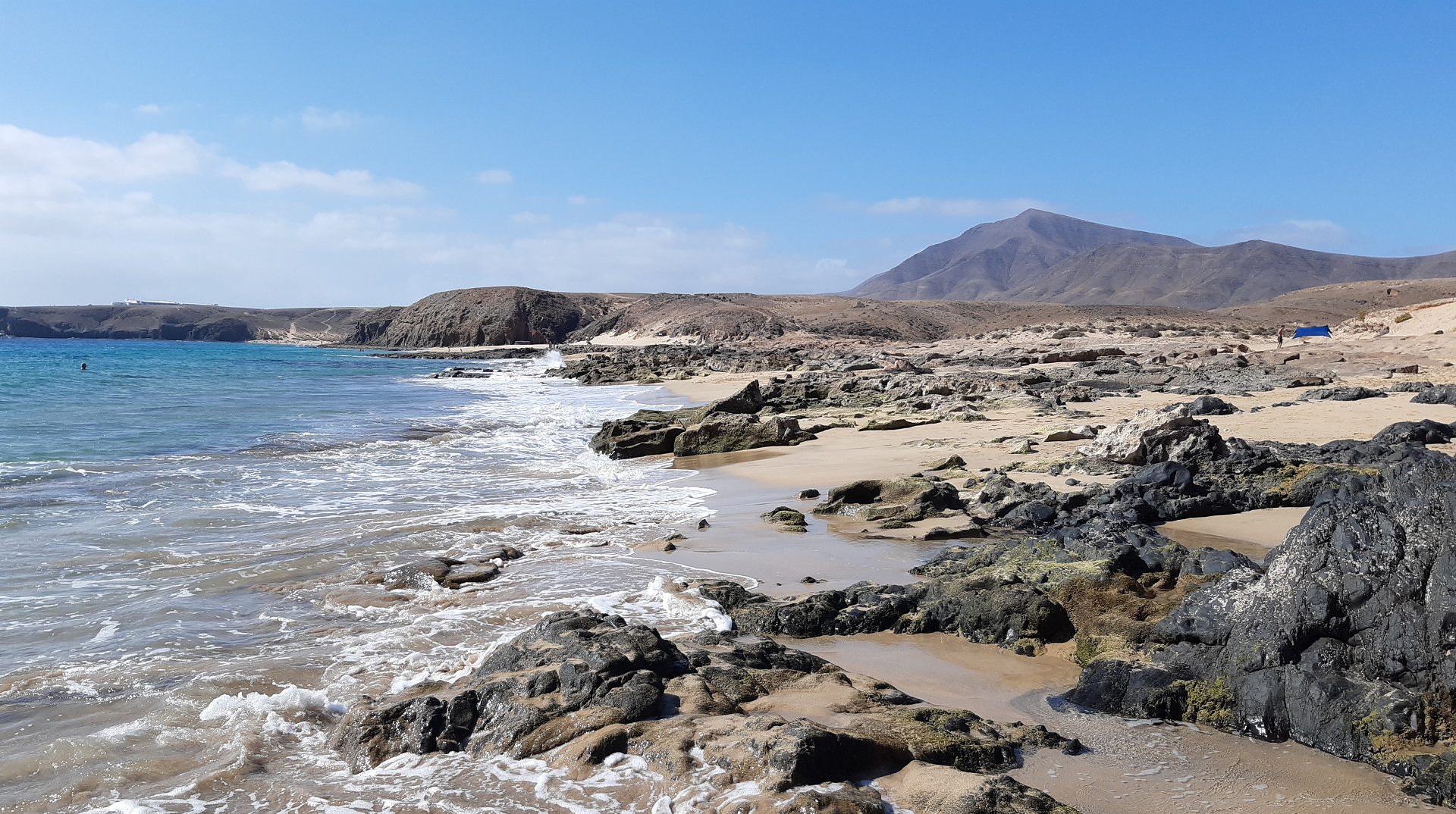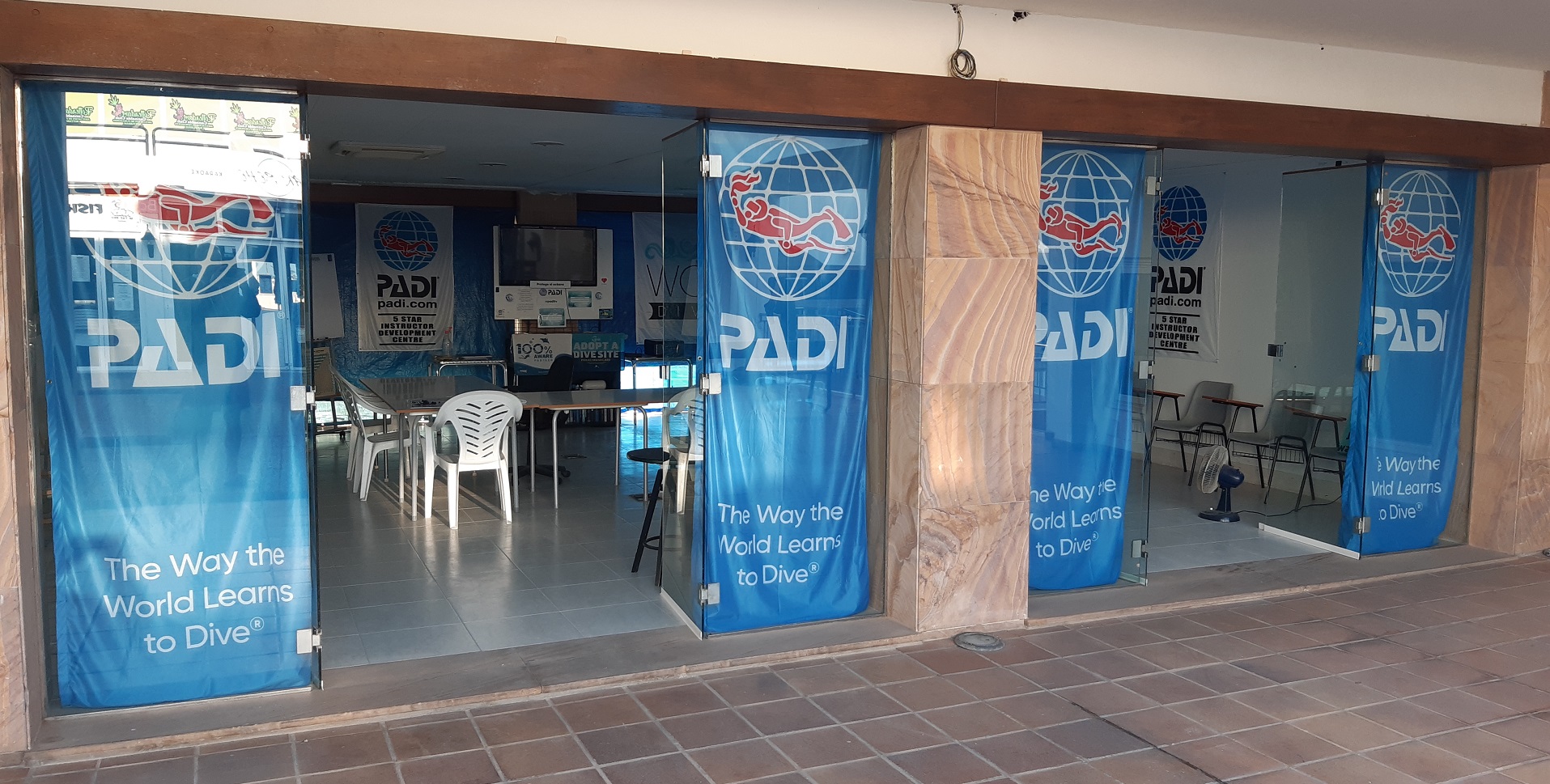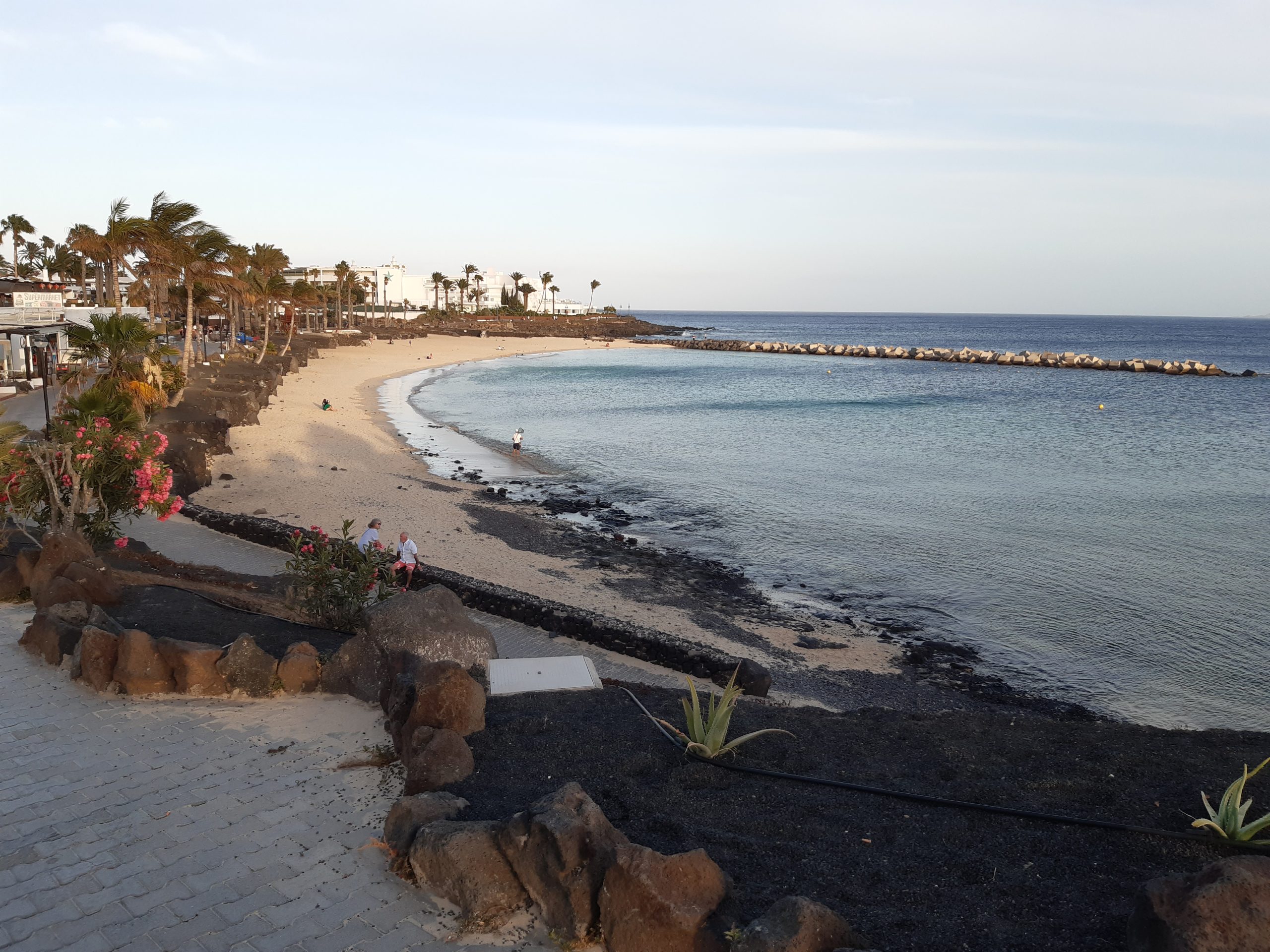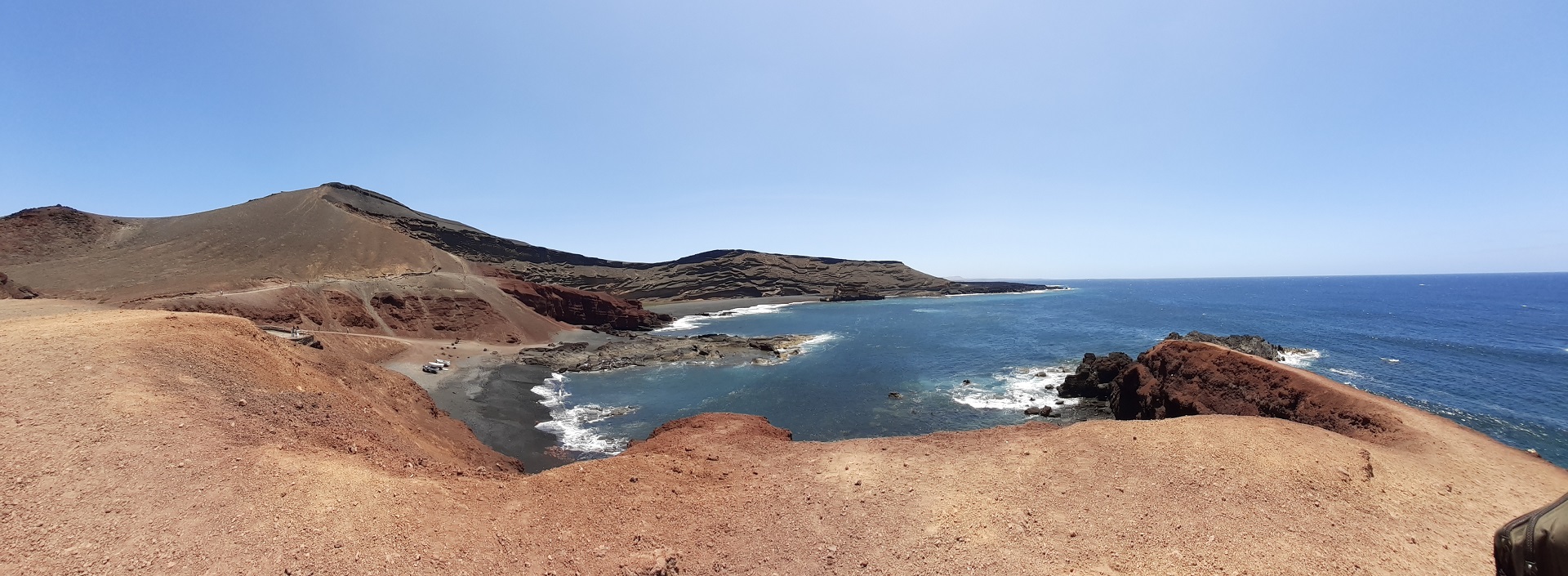LEAVING MY COmfort zone
A phone call from a long-lost friend altered the course of my perspective. He shared his ambitious plan to become scuba diving instructor. It was his words that reshaped my outlook, turning challenges into opportunities and setting the stage for a next step in my scuba diving adventure. I am going to become a divemaster.
“If you don’t leave your comfort zone, do not expect the extraordinary to happen.”

Playa Papagayo – Lanzarote, image credit: Juraj Hrabovsky
With the successful completion of our e-learning, the eagerly anticipated day to board the plane finally arrived. Despite the typical stress of a delayed flight at the transfer airport, a few hours later, the initial sight of our destination began to unfold. There was no airport in view from my seat, and the approach seemed to flirt with the waters of the Atlantic Ocean as the plane gracefully touched down at Arrecife airport in Lanzarote, part of the Canary Islands.
The first night gave us a gusty welcome, nearly swiping my cap away. We zipped through the terminal, grabbed our bags, got in the car, made a quick stop at the shop, and then hit the highway to Playa Blanca. With the darkness creeping in, the sky turned into a stunning canvas of colours during the sunset, outlining the silhouettes of volcanoes on the distant horizon as we cruised through the island’s volcanic scenery. After a short drive, we arrived at our apartment, the cozy spot that’ll be our home for the next two weeks. The real adventure kicks off tomorrow at 8 am sharp.
Bring it on
The next day brought a bunch of questions swirling in my head as I stepped into the unknown. We hopped into a short drive that led us to the dive centre, where we got to meet our instructors – Thayany, Niko, and Fran. Without wasting any time, we found ourselves diving into new skills, both in the water and on the beach. After a quick review of dive planning, the other folks aiming to be instructors went off for their own course, leaving me to jump into my divemaster training.

Lanzarote Nonstop Divers – our classroom. Image credit: Juraj Hrabovsky
First up, there was a check on 24 divemaster skills, just to give the instructors an idea of where I was at. Some of them went smoothly, while others were a bit tricky. It wasn’t a pass-or-fail kind of thing; it was more about figuring out where I could get better. This early assessment was like a roadmap, showing me the area I needed to work on because, down the line, I’d be demonstrating those skills in the final exams.
- Equipment assembly, adjustment, preparation, donning and disassembly
- Predive safety check (BWRAF)
- Deep-water entry
- Buoyancy check at surface
- Snorkel-regulator/regulator-snorkel exchange
- Five-point descent, using buoyancy control to stop descent without contacting the bottom
- Regulator recovery and clearing*
- Mask removal, replacement and clearing*
- Air depletion exercise and alternate air source use (stationary)
- Alternate air source-assisted ascent
- Free flowing regulator breathing
- Neutral buoyancy, rise and fall – using low pressure inflation
- Five-point ascent
- Controlled Emergency Swimming Ascent
- Orally inflate BCD to hover for at least 60 seconds
- Underwater swim without a mask
- Remove and replace weight system underwater
- Remove and replace scuba unit underwater
- Remove and replace scuba unit on the surface
- Remove and replace weight system on the surface
- Surface dive while skin diving and clear snorkel using blast method upon surfacing
- Disconnect low-pressure inflator
- Re-secure a loose cylinder band
- Perform an emergency weight drop
The day zoomed by, and spending a lot of time in the water turned out to be a bit tiring. As I lay in bed at the end of the day, the feeling was rewarding. I’m here, and it’s all up to me now. In two weeks, I’ll be…
Over the next few days, my mornings were filled with more theoretical stuff, mostly diving into discussions and testing what I had learned during the e-learning sessions. Sometimes, this was a team effort with the instructor students group, and more people meant more fun. Learning felt so much easier and natural when surrounded by like-minded folks. On the first day, I had a few nice dives, getting to know the local dive sites. Gradually, I found myself getting more and more involved in the daily activities of the dive centre, taking on supervised tasks with the clients.
Becoming the dive leader at Playa Flamingo
Speaking of clients, a vital part of my Dive Master (DM) training involved a program called DSD Leader (Discover Scuba Diving). This activity is supervised by an instructor, as is everything where clients are involved, and it serves as the first scuba diving experience for non-divers. After a few dives where I merely accompanied my instructor, I gradually took on more responsibilities, such as conducting briefings for first-time divers and assisting during their initial underwater ventures.
For the first time, I found myself accountable for creating a positive connection for these newcomers—a make or break moment. It’s the time when they either fall in love with diving or consider it just another item checked off their to-do list. Like all first steps, these experiences can be a bit awkward, so patience and clear explanations are key. The instructor closely monitored my briefings, always providing support and intending to clarify anything I might forget to mention. The goal was to boost my self-confidence, ensuring I could do it even better the next time.

Playa Flamingo – Lanzarote, where I did most of my dives. Image credit: Juraj Hrabovsky
As we plunged into the water, a more hands-on approach became essential. The first underwater experience is a revelation for most people, and frankly, they don’t possess the skills to manage everything at once. The initial concerns they may have, are mingled with the thrill of breathing underwater, immersed in a visual spectacle they’ve never witnessed before. During moments like these, coordinating movements often takes a back seat, and that’s where you come in handy.
Honestly, I was so focused on keeping an eye on them, springing into action whenever they veered towards the surface or descended to the bottom, that I often missed the questions about wildlife they had after the dive. As the number of these dives increased, I grew calmer and more confident, eventually starting to relish these underwater adventures. At the end of each day, the fatigue and hard work were overshadowed by the overwhelming sense of satisfaction. Reminiscing about all the happy faces beaming at me after each dive, I realized it could be the start of something new for these guys.
As the days unfolded, alongside mastering the 24 divemaster skills, I had to tackle five in-water exercises. The goal was to score a minimum of 20 points in total.
- Swim 400 metres nonstop, without swimming aids and using any stroke or combination of strokes
- Tread water, drown-proof, bob, or float using no aids and wearing only a swimsuit for 15 minutes, with hands (not arms) out of the water during the last two minutes.
- Swim 800 metres face down, using mask, snorkel and fins, nonstop, without flotation aids and without using arms to swim.
- Tow (or push) a diver for 100 metres/yards nonstop, at the surface, without assistance both divers equipped in full scuba equipment.
- In confined water, demonstrate the ability to effectively respond to an unusual circumstance underwater by exchanging all scuba equipment (except exposure suits and weights) with a buddy while sharing a single regulator second stage.
Before starting my divemaster course, I occasionally hit the pool to boost my swimming speed and stamina. However, I must admit I’m not the quickest swimmer, so the 400m swim posed the greatest time challenge for me. With the water temperature warming up to 20°C in May, I aimed to wrap it up quickly. Strangely, I found the 15-minute float / tread more taxing, where you must stay in one spot without swimming. If the water isn’t warm, you feel it by the end. On the other hand, the diver tow was a breeze for me – just a smooth glide until we reached the beach. The 800m fin swim was also manageable, and I even surpassed the required points, alleviating some of my initial concerns.
After a week filled with training, diving, and squeezing in some study or homework in the evenings, the weekend arrived, bringing a well-deserved break. The lure of exploring the island proved too tempting to resist.

El Golfo – Lanzarote, image credit: Juraj Hrabovsky

